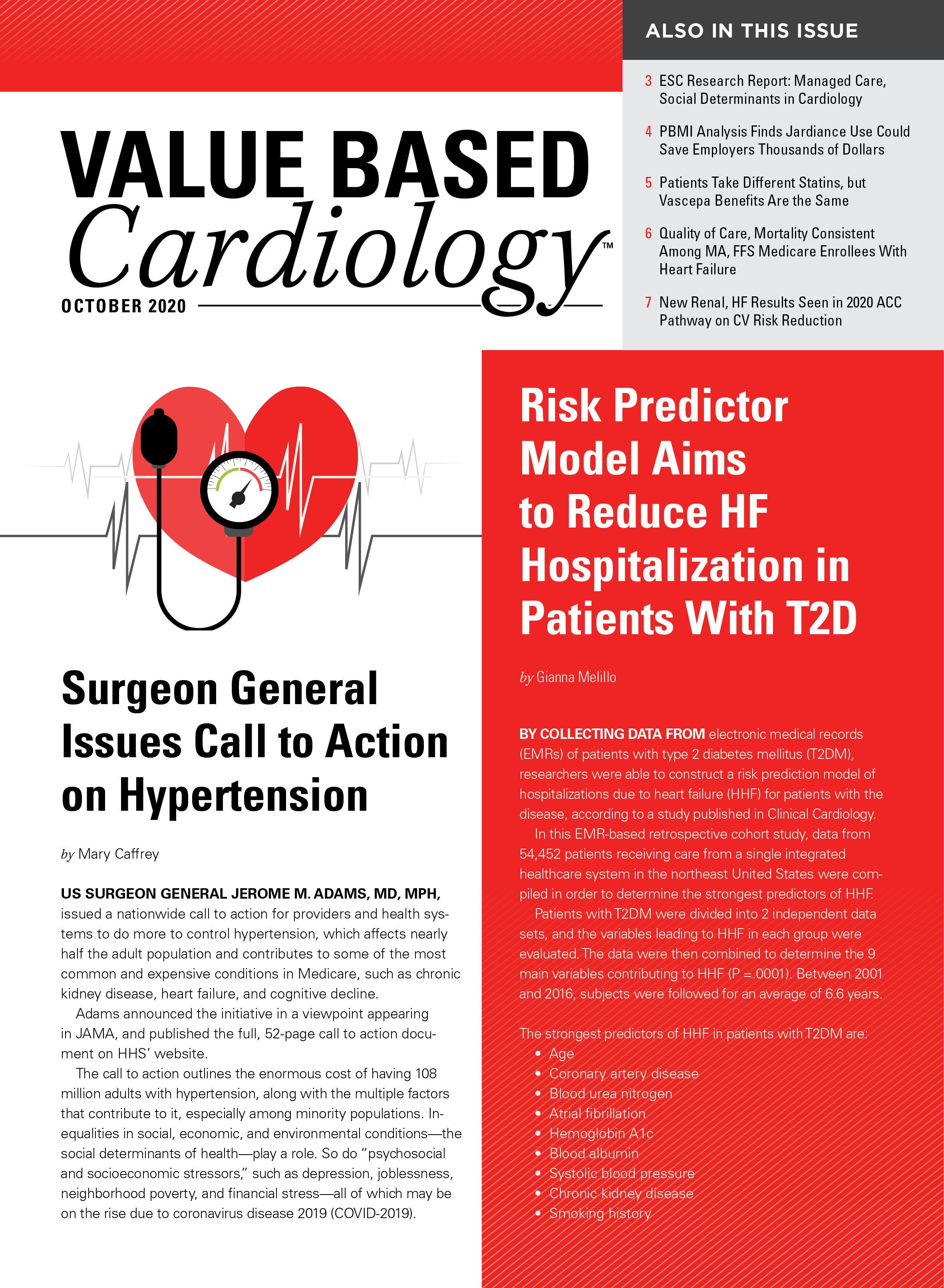- Center on Health Equity & Access
- Clinical
- Health Care Cost
- Health Care Delivery
- Insurance
- Policy
- Technology
- Value-Based Care
Surgeon General Issues Call to Action on Hypertension
The recent focus on disparities in health care comes through in the call to action.
US Surgeon General Jerome M. Adams, MD, MPH, issued a nationwide call to action for providers and health systems to do more to control hypertension, which affects nearly half the adult population and contributes to some of the most common and expensive conditions in Medicare, such as chronic kidney disease, heart failure, and cognitive decline.
Adams announced the initiative in a viewpoint appearing in JAMA, and published the full, 52-page call to action document on HHS’ website.
The call to action outlines the enormous cost of having 108 million adults with hypertension, along with the multiple factors that contribute to it, especially among minority populations. Inequalities in social, economic, and environmental conditions—the social determinants of health—play a role. So do “psychosocial and socioeconomic stressors,” such as depression, joblessness, neighborhood poverty, and financial stress—all of which may be on the rise due to coronavirus disease 2019 (COVID-2019).
The HHS document describes a 3-step process:
- Awareness: increasing the percentage of people who know they have high blood pressure
- Treatment: increasing the percentage receiving guideline-recommended care
- Control: increasing the percentage of the population who have hypertension lowered below specific thresholds.
In JAMA, Adams and co-author Janet S. Wright, MD, write that a larger share of the US adult population had uncontrolled hypertension in 2017-2018 (53.8%) compared with 2013-2014; in late 2017, the American Heart Association and American College of Cardiology lowered the level of what is considered hypertension or high blood pressure from 140/90 to 130/80, based on clinical trial data that supported controlling blood pressures at lower levels.
Adams’ message comes when the focus on disparities in health care and outcomes is brighter than ever, in part because minorities are dying at higher rates from COVID-2019. Part of the call to action is to address disparities in neighborhood-level conditions that contribution to hypertension.
“Setting blood pressure control as a population health priority also draws attention to the profound disparities associated with hypertension,” Adams and Wright wrote in JAMA.
The call to action has 3 major goals:
(1) Making hypertension a national priority and “galvanizing action” by both payers and employers to promote blood pressure control by eliminating co-pays for key medications or blood pressure monitors.
“The reason to establish this goal is not merely to describe these health inequities, but to do so as a catalyzing step toward their elimination,” they said.
(2) Creating community supports for hypertension control. Community-level investments in places to exercise, ride bicycles, and find affordable, healthy food, “should be a priority,” they wrote. Systems should be in place so that people with high blood pressure no where to go for help.
(3) Providing the best care for patients with hypertension. Adams writes that the best health systems can achieve hypertension control rates of 70% or better, but this a team approach, standardization, metrics and accountability, and strategies for self-monitoring.
In his message in the HHS document, Adams writes that while hypertension is a condition associated with the elderly, it does not begin in old age, nor is it limited to this group. “All ages are impacted, and early identification and long-term control can preserve cardiovascular health now and into the future,” he writes. “We know that lifestyle changes, such as being physically active and adopting a healthy diet, can promote hypertension control, yet many communities have significant barriers that prevent people from making these changes.”
The final section of the HHS document outlines the “sectors” that can contribute to the solution. Government has a role in funding research, but the document calls on “public health professionals, health care professionals, and their professional associations and societies” to take the initiative to “make the case” for investing in hypertension control.
Reference
Adams JM, Wright JS. A national commitment to improve the care of patients with hypertension in the US. JAMA. Published online October 7, 2020. doi:10.1001/jama.2020.20356

More Needs to Be Done to Reduce Racial Disparities in Home Dialysis
March 24th 2023On this episode of Managed Care Cast, we speak with Virginia Wang, PhD, and Matthew L. Maciejewski, PhD, who talk about their recent study on racial disparities in home dialysis, and what more needs to be done to increase uptake and reduce disparities in home dialysis for non-White patients.
Listen
